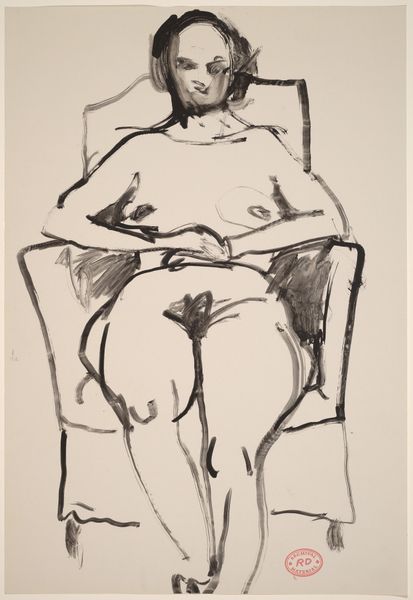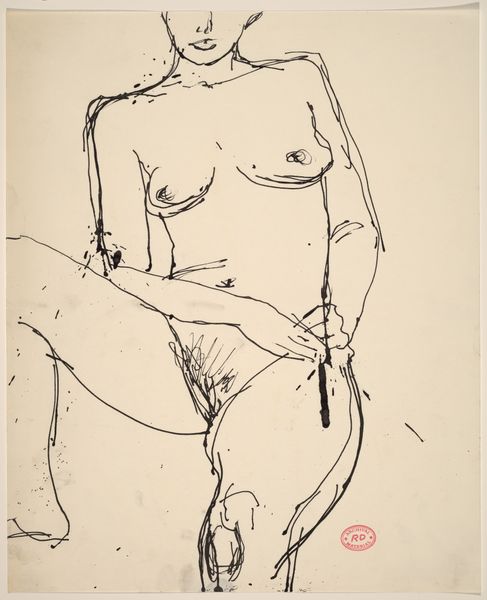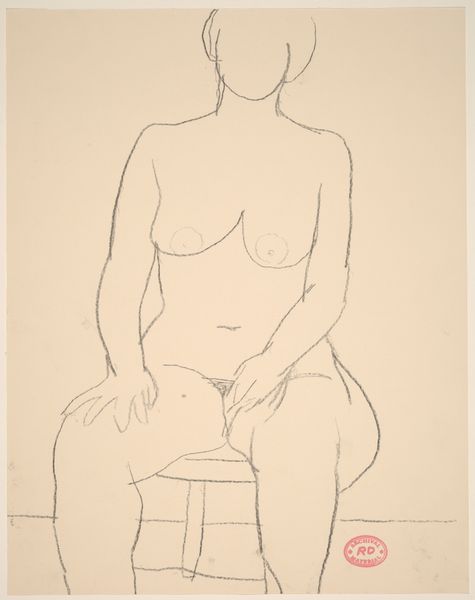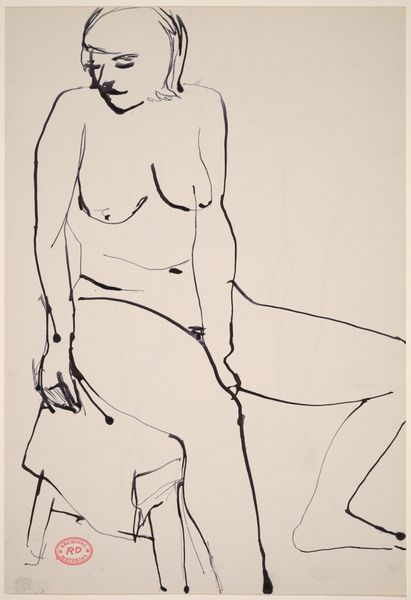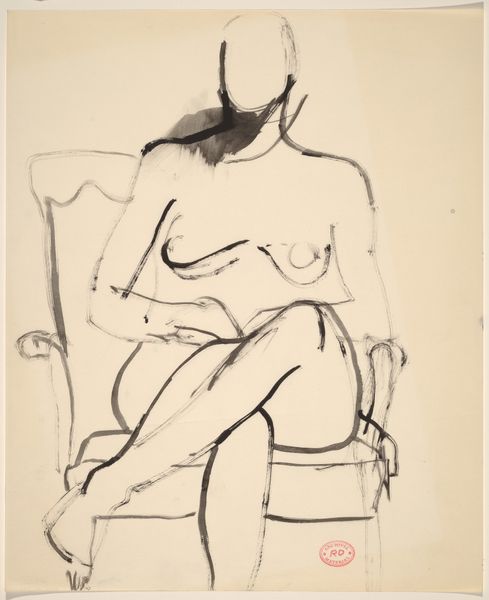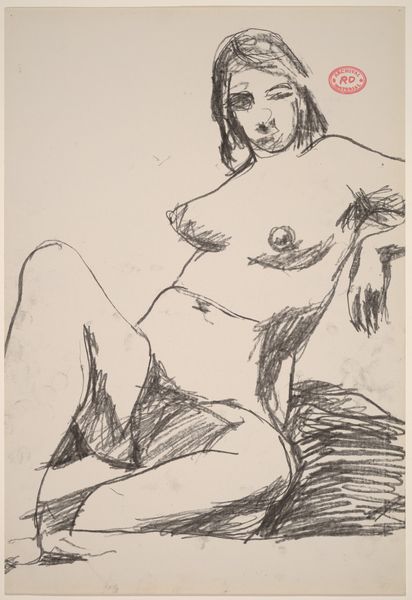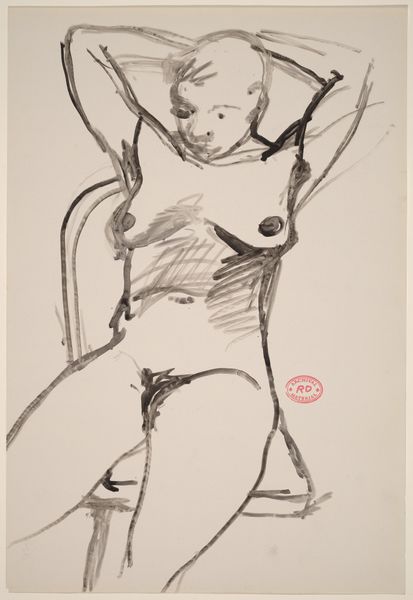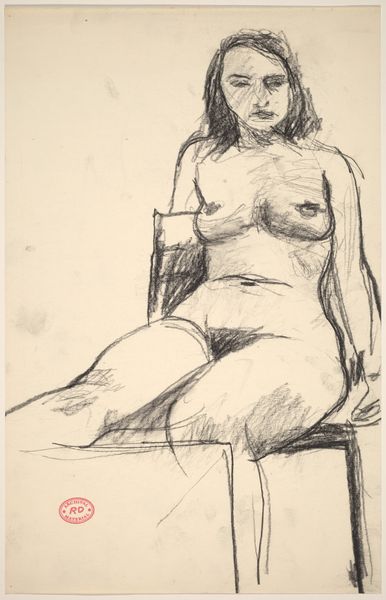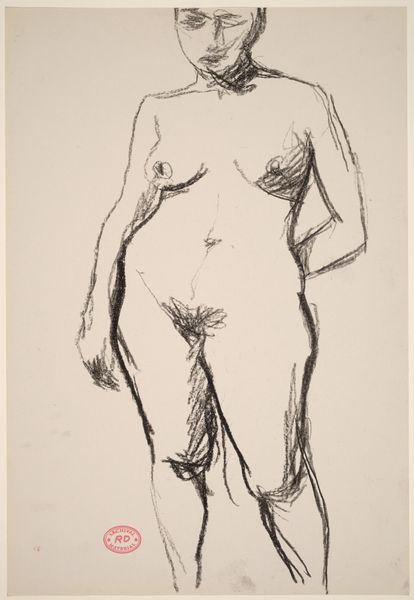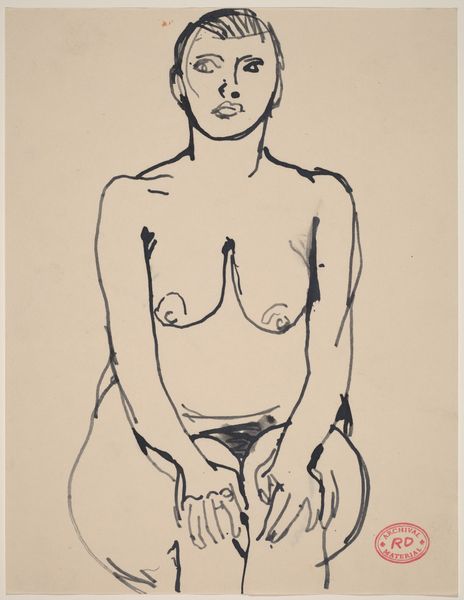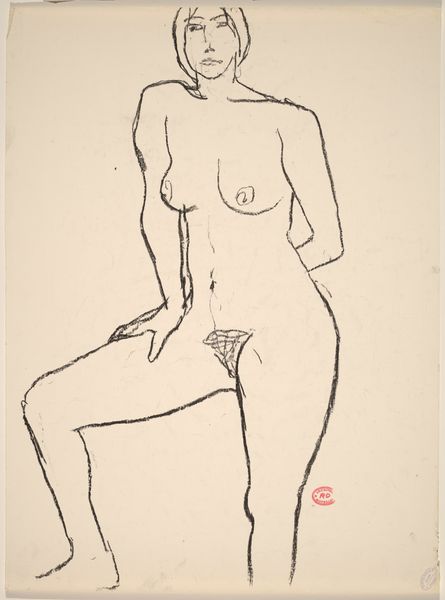![Untitled [seated female nude with hand on adjacent stool] by Richard Diebenkorn](/_next/image?url=https%3A%2F%2Fd2w8kbdekdi1gv.cloudfront.net%2FeyJidWNrZXQiOiAiYXJ0ZXJhLWltYWdlcy1idWNrZXQiLCAia2V5IjogImFydHdvcmtzL2IzMDM2YzM1LWRjNjQtNDg1Mi1iOTE3LWViMjMwMmFmMWM4Mi9iMzAzNmMzNS1kYzY0LTQ4NTItYjkxNy1lYjIzMDJhZjFjODJfZnVsbC5qcGciLCAiZWRpdHMiOiB7InJlc2l6ZSI6IHsid2lkdGgiOiAxOTIwLCAiaGVpZ2h0IjogMTkyMCwgImZpdCI6ICJpbnNpZGUifX19&w=3840&q=75)
Untitled [seated female nude with hand on adjacent stool] 1955 - 1967
0:00
0:00
drawing
#
drawing
#
imaginative character sketch
#
light pencil work
#
ink drawing
#
pen sketch
#
junji ito style
#
cartoon sketch
#
bay-area-figurative-movement
#
ink drawing experimentation
#
pen-ink sketch
#
arch
#
sketchbook drawing
#
watercolour illustration
Dimensions: overall: 40.6 x 27.9 cm (16 x 11 in.)
Copyright: National Gallery of Art: CC0 1.0
Curator: Well, hello there. Richard Diebenkorn's "Untitled [seated female nude with hand on adjacent stool]", created sometime between 1955 and 1967, immediately strikes me. What are your first impressions? Editor: Raw. There's an almost brutal honesty in the line work, wouldn't you say? It’s stripped down to essentials. Stark ink on white ground... powerful contrast. Curator: Indeed. Diebenkorn, by this point deeply involved in abstract expressionism and representational art, really plays with positive and negative space. Notice the calligraphic quality of the lines, the quick, decisive strokes? He captures the essence of the figure with remarkable efficiency. But to consider this piece historically, his return to figuration came amidst broader socio-political unease, influencing, and in turn, being influenced by, debates surrounding Cold War ideologies of self and body. Editor: Yes, it's interesting how the starkness also serves to emphasize the figure’s presence, its weight in the space. The composition is structured by horizontals and verticals creating internal scaffolding that contain the flowing nature of his line. It almost reads like a blueprint, a construction of the female form... yet devoid of architectural warmth. Curator: That reminds us how postwar art began challenging conventional representation and aesthetics. Abstraction offered an alternative vocabulary in the face of existential anxieties, however, artists still referenced history, pushing towards new forms of self and social reflection, no? The nude figure itself becomes a site of inquiry rather than simple observation. The work raises issues of intimacy, objectivity, even voyeurism, doesn’t it? Editor: Absolutely. I look at the almost aggressive quality of the rendering. What some would see as incompleteness only serves to charge it further with creative power. The chair seems about to buckle from the sitter’s presence. A kind of post-war heavy gravity permeates the paper... Curator: His return to representation mirrored a collective negotiation between avant-garde aesthetics and lingering traditions during periods of immense upheaval. The sketch becomes not just an aesthetic object, but an encapsulation of anxieties. Editor: It reminds me how much power resides in the fundamental elements: line, form, void... A testament to his mastery. Thank you for shedding light on how culture further impacted and framed Diebenkorn's hand. Curator: It's been a pleasure deconstructing it together, highlighting intersections of personal aesthetic vision within art-historical discourses.
Comments
No comments
Be the first to comment and join the conversation on the ultimate creative platform.
